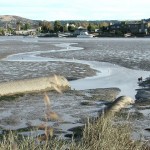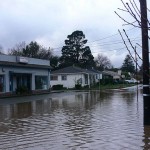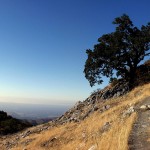With the Northeast still reeling from the affects of superstorm Sandy, there’s been quite a bit of chatter out here on the Pacific about our own vulnerabilities to large tropical storms in the age of climate change.
I wrote last week about the Pineapple Express, the colorful term for the equally descriptive “atmospheric river” that might rain down upon us one of these days due to warmer Pacific waters.
But it’s not just a storm itself that’s a flood danger. Sea level has risen about one foot higher than a century ago, and is projected to crest at as much as 4.5 feet higher by 2100. When a major storm hits, every inch of water counts. Northeasterners found this out with Sandy. While we can’t blame a particular storm on climate change (we can only blame increased frequency), the link is quite clear with sea level rise.
The Bay Area has actually been doing quite a bit of work to mitigate for sea level rise, which should give all of us hope. So in this scary age of mega-storms, it’s worth revisiting some of the efforts out there that are meant to keep us safe, even if much, much more still needs to be done.

Marshes as a model
On the western shores of the San Francisco Bay behind San Quentin Prison, the small town of Corte Madera has seen its fair share of flooding, high winds and erosion — a situation that’s bound to get worse under climate change. Scientists are now studying how Corte Madera Marsh can be used to buffer the impact of extra water. The hope is that data collected can be plugged into computer models to create localized sea level rise scenarios and to project impacts on wetlands and shoreline around the Bay. [Read more]

Artificial islands
Certain species fare worse than others under climate change. Take the clapper rail, which makes its home in salt marshes along the bay. Sea level rise threatens to obliterate its habitat. In response, the Western Ecological Research Center (WERC), part of the U.S. Geological Survey, is testing the use of artificial floating “islands” as high-tide refugia for the rails. The islands may also help keep tidewater out of nests and prevent chicks from washing away. [Read more]

A planning toolbox
Most of the world’s people, and all their stuff, are along coastlines. That makes sea level rise and storm flooding especially dangerous in places like the Bay Area. Our Coast-Our Future is developing an online “adaptive planning toolbox” that will help people predict things like what neighborhoods or infrastructure are at risk, what land could serve as a buffer, and whether it makes sense to restore a particular wetland. The underpinning of the toolbox is a high-resolution digital elevation model that’s paired up with predictions of coastal erosion and storm surge scenarios. [Read more]

Peaks of resilience
The Gabilan Range runs south of San Jose and contains some of the best wildlife habitat in Central California. It’s also fairly stable, from a climate perspective. That makes the Gabilan Range a pretty valuable resource in an era of climate change. The Bay Area is at risk for losing an astounding amount of biodiversity as its climate gradually becomes more like the Los Angeles Basin. The good news is that conservation managers are already strategizing on how to get the best bang for our buck by valuing resiliency in habitat acquisitions. Rugged, mountain areas are good opportunities because the many gradients in the landscape create a lot of habitat niches compressed into a small area. Experts are also advising a new focus on the “drier side of the California ecological palette,” not just wetlands. Western sycamore riparian woodlands, alkali meadows, seasonal wetlands, and valley oak savannas are all habitat that were once abundant in the Bay Area and are associated with the kind of highly variable, low rainfall conditions that climate change presents. [Read more]
Read more Bay Nature coverage about climate change.
Alison Hawkes is the online editor of Bay Nature.





